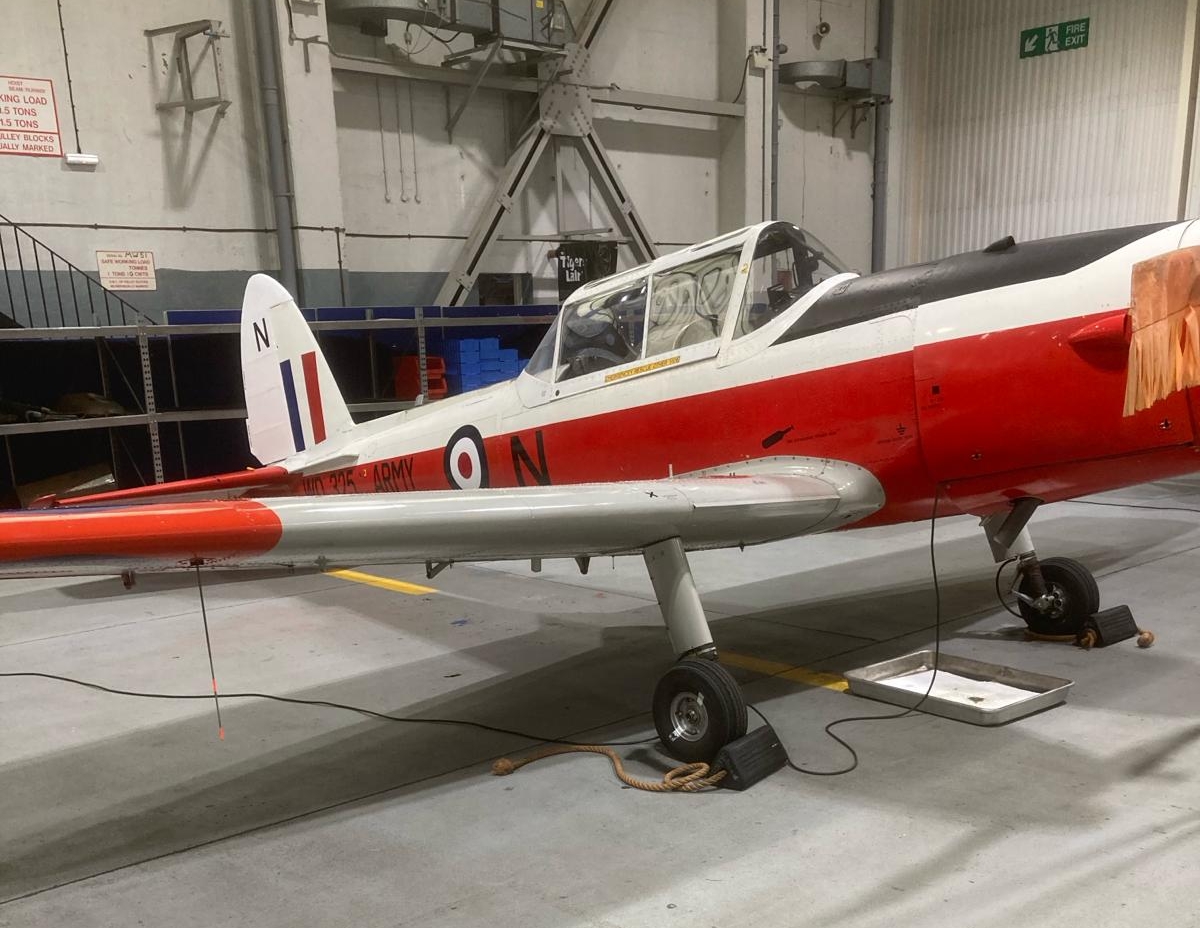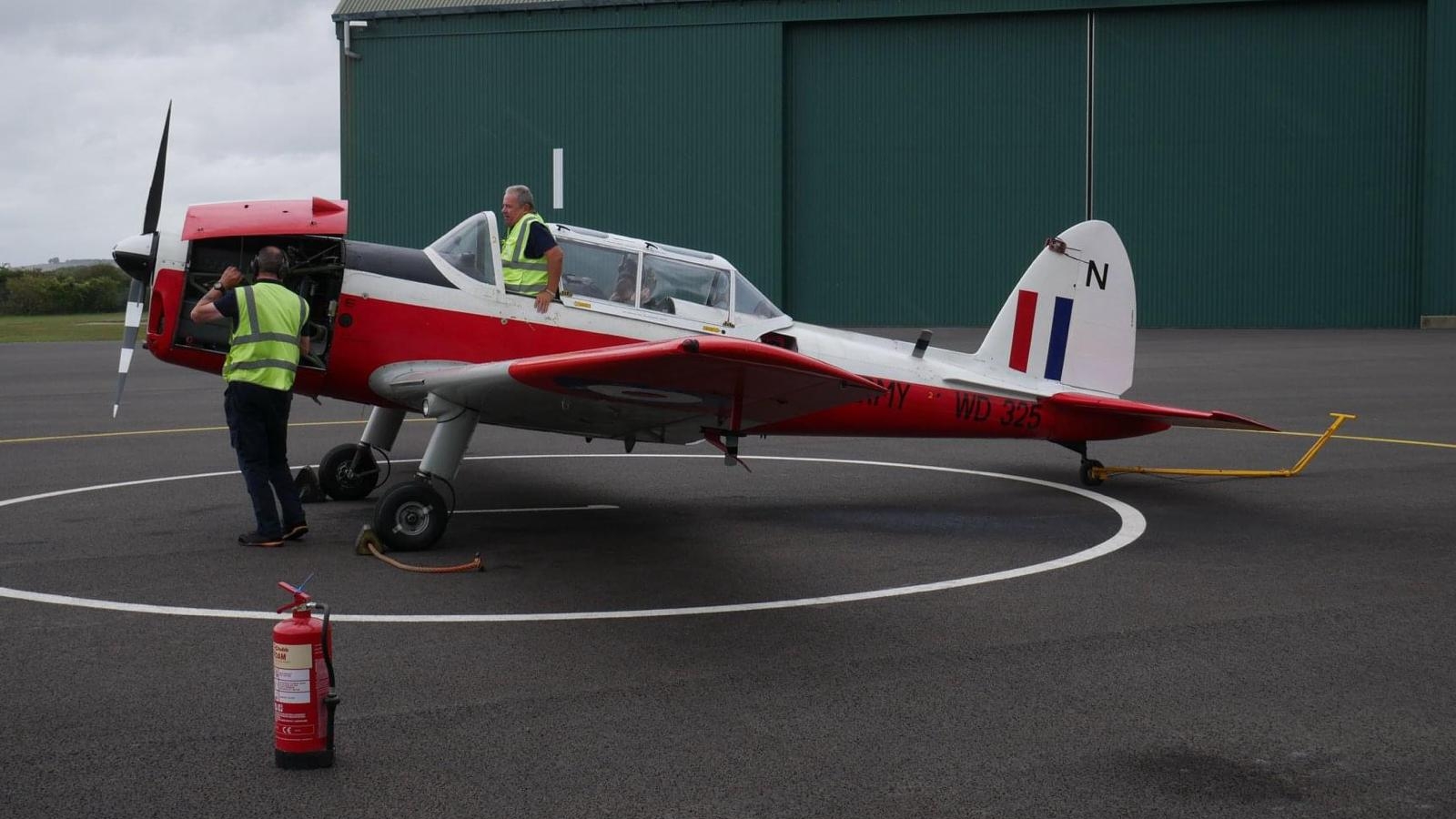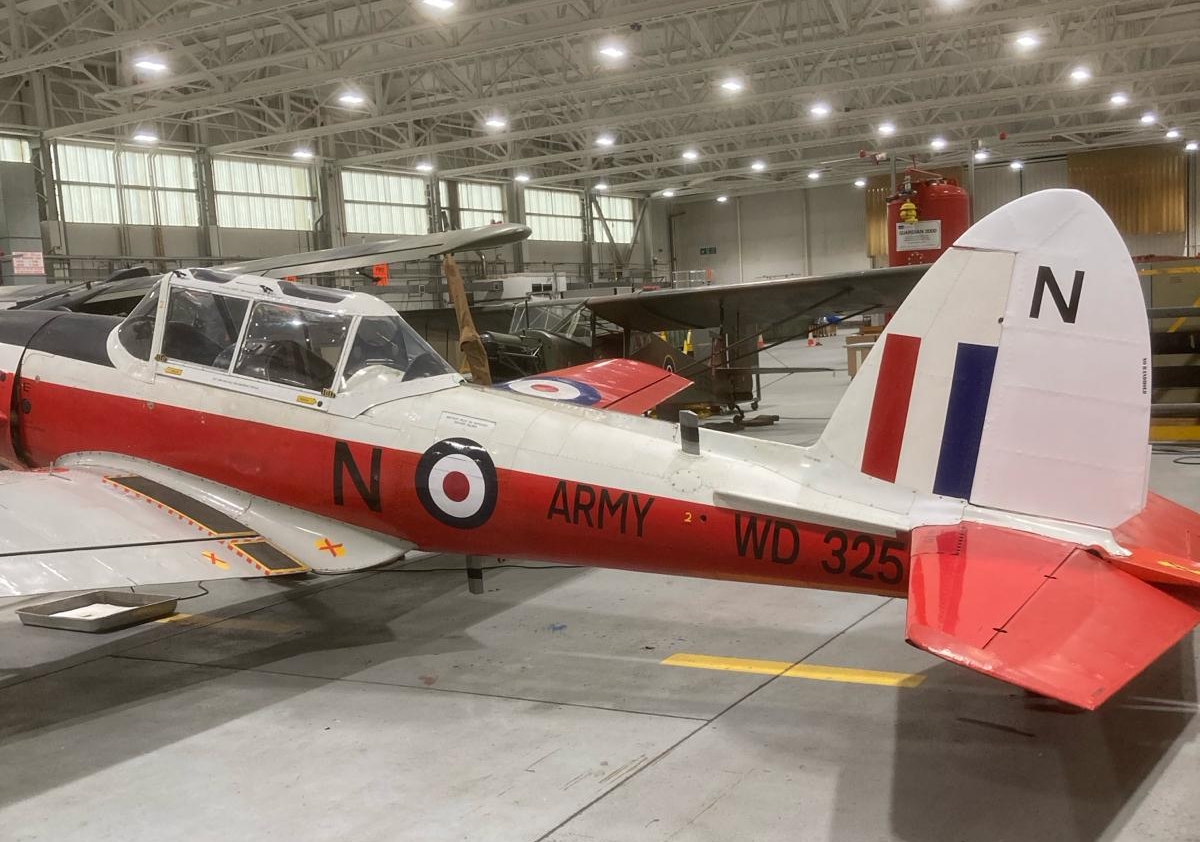Our De Havilland Chipmunk has been with us for a few years now but has yet to fly under the HAAF banner – although that is set to change very soon. Following a two-year period of maintenance and refurbishment, WD 325 is close to being cleared to fly again.
Recent activity to prepare for a Permit to Fly has included ensuring that the paint finish and markings are to the right standard. This has necessitated a trip to the specialists for the rudder as the skin and paint finish were showing their age. Top marks to Mark Masters and his son James at CAV Aircraft for a lovely re-skin and paint job with nice new decals. In parallel, friend of the flight and all round good guy Phil Southgate, (Son of Maj Roger Southgate AAC AFM) agreed to rework the mainplane roundels for us.
Helping Phil to fit new vinyl gives an appreciation of what it must be like to wrap a car with vinyl, something he does all the time at his Thruxton based company Wrap’d & Tint’d.

WD325 almost ready to go in the hangar
Now we have the markings in top condition, it was appropriate to ask the MoD and the CAA for permission to fly the aircraft in military colours and markings – and we are delighted to now have approval.
There are a few more engineering steps to take but watch this space for news of our test flight, anticipated soon.
CHIPMUNK WD 325 POTTED HISTORY
For those keen to understand the story and brief history behind the HAAF’s Chipmunk, we have a brief history below.
This Chipmunk aircraft was built in 1951 under licence in the United Kingdom as a Mark T10 by De Havilland Canada. The manufacturer allocated the aircraft Serial Number C1/0263.
This aircraft was first registered by the Royal Air Force as tail number WD 325.
WD 325 was one of the original eleven military standard T10 Chipmunks to enter Service in 1953 with the ‘Light Aircraft School’ at RAF Middle Wallop.

WD325 ready for ground runs on the dispersal
The Army Air Corps was formed on 1st September 1957 and the Chipmunk aircraft were transferred in for service on 9th Oct 1957. The aircraft, including WD325, remained at Middle Wallop and were used at the Basic Fixed Wing Training Squadron for the grading of Service personnel applying to become a pilot in the Army Air Corps.
The Chipmunk was gradually phased out of its ab-initio role by the British Army and the last aircraft was retired in 1997. As a part of the fleet draw-down, WD 325 was allotted to the Army Historic Aircraft Flight.
The aircraft was transferred from the Military register on 9th December 2020 and was allocated a civil registration G-CLWK but is still marked as WD325.
Story by Steve Harris

